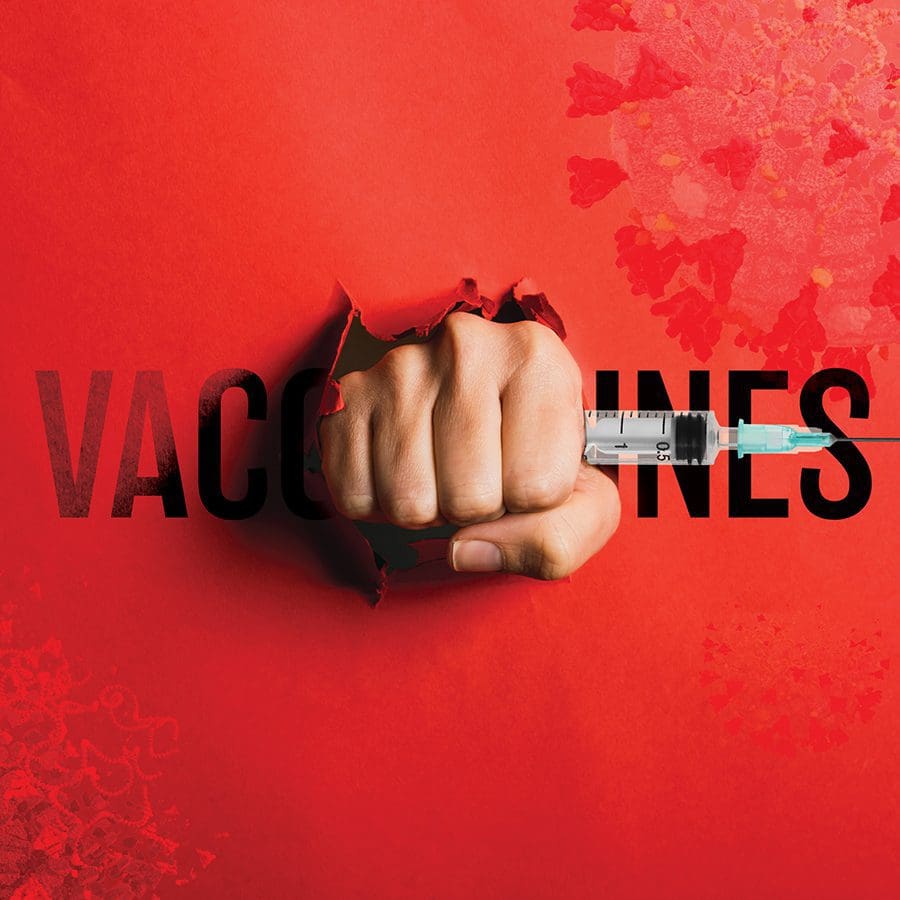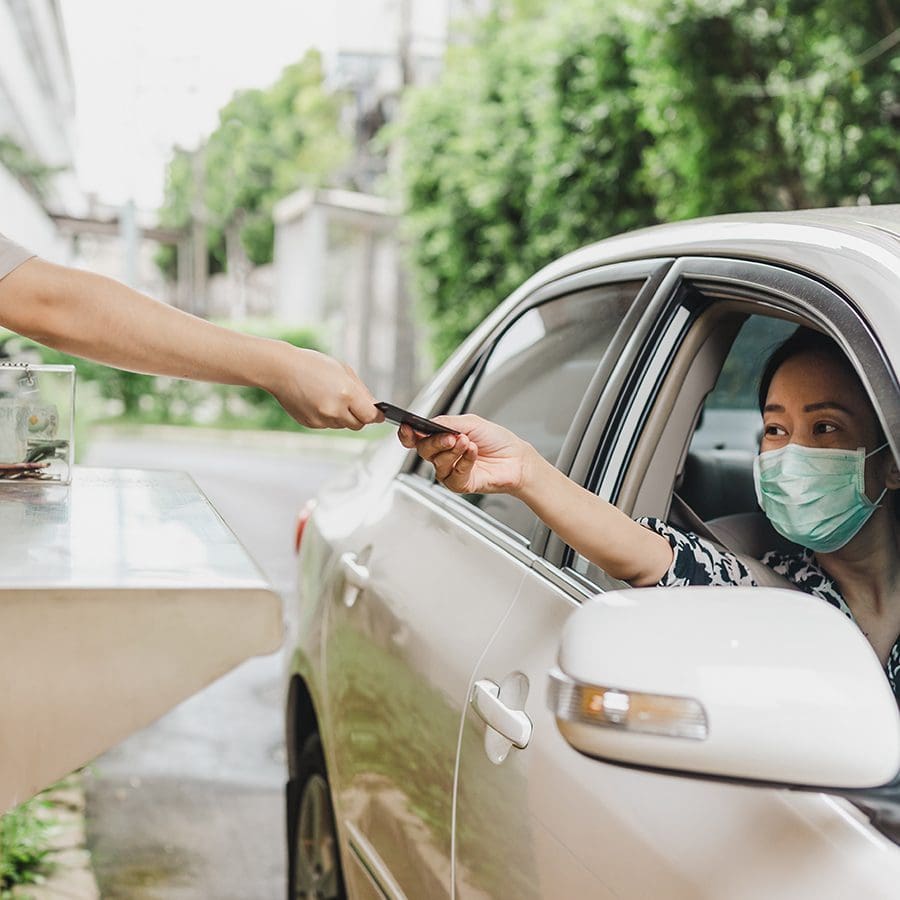
By DR. Richard Bosshardt
Vaccines

The truth about COVID-19 and where we go from here.
Trying to make sense of COVID-19 can be frustrating because it is a moving target. The COVID of today is not the COVID of 2020 or even 2021. SARS-CoV-2, the virus that causes the illness we call COVID, is constantly changing. Current variants include alpha, beta, delta, omicron, BA.4, BA.5, and a host of others. Mutations change the virus’ transmissibility and virulence. The bad news is that the predominant current viruses—BA.4 and BA.5—now make up more than 80% of COVID infections–are more easily transmitted and can cause illness even in vaccinated individuals. The good news is that they seem to cause less severe illness, even for unvaccinated persons.
The moving target problem applies to vaccines as well, as our knowledge of them and their effectiveness has changed since they were introduced a year and a half ago. The COVID vaccines were supposed to prevent people from getting COVID and transmitting it to others. They were supposed to allow us to return to work, play, and school, and to live normally again. They did not do this. There are many reasons for this, including mixed messaging about them and hesitancy to accept how fast, and the manner in which they were rolled out. The vaccines undeniably did one thing well and we must give credit where credit is due–they greatly reduced the chance of becoming seriously ill and dying from COVID. Vaccine manufacturers pulled off a feat that was regarded as impossible. That said, there is still much we do not know about vaccines.
For example, none of the vaccine trials identified the potential of these vaccines to cause myocarditis — an inflammation of the heart — in adolescent boys and young men. Another concern is increased menstrual bleeding in 40% of women after being vaccinated. Although it appears to be temporary, this raises questions about effects on fertility long term, questions for which some answers might have been nice before millions of women of child-bearing age were vaccinated with the assurance that doing so was safe. What other side effects may become evident over the long term? Only time will tell. We know that vaccine effectiveness (VE) wanes with time. The Pfizer VE drops from 95% at two weeks to 77% within four months. This has led to the recommendations of boosters with steeper and faster VE drop-offs after each one. At what point do the risks of continued boosters exceed the risks of COVID? The honest answer is we do not know. Another question is: should we be boosting people before everyone has had a chance to be vaccinated?
“COVID is here to stay. What was once a pandemic is now an endemic virus.”

The goal of all the public health measures and vaccination was never zero COVID; it was to allow us to live with it and return to normal life, just as we do with seasonal flu, which kills a minimum of 30,000-80,000 people each year. Instead, we have perpetual masking, social distancing, quarantining asymptomatic people, restrictions in travel, and vaccine “passports,” etc. And many Americans are still living with school closures and various restrictions.
COVID is here to stay. What was once a pandemic is now an endemic virus. Seroprevalence studies going back to early 2020 showed that COVID was already so sufficiently widespread that zero COVID, i.e. eradicating it, was never an option, or even possible. All the public health measures – mandated lockdowns, school closures, prohibiting gathering in large groups, mandated masking and social distancing – were simply to slow the spread, not eliminate the virus. The collateral damage of these Draconian measures was catastrophic and some of it will be with us for a generation or more. The economy was decimated, businesses closed (some forever), schools closed for over a year with immeasurable loss of learning to students, mental health problems proliferated as one quarter of college-age adults admitted having contemplated suicide, and needed medical care – including cancer screenings – were not provided.
Deaths directly and indirectly attributed to the incidental effects of these measures have been calculated to be greater than the deaths from COVID itself. The World Health Organization estimates that the economic impact of COVID lockdowns threw over 100 million people into extreme poverty worldwide, which resulted in more deaths from starvation than from COVID.
COVID introduced the general public to the concept of herd immunity, which states that a viral pandemic ends once the population has achieved a sufficient level of immunity, whether acquired immunity from exposure to the virus or from a vaccine. For a very infectious virus like SARS-CoV-2, the percentage has to be high, on the order of 90%. More than two-thirds of the U.S. general population has been fully vaccinated. For those over 65, the percentage is over 90%. Add in the number of people who had COVID and recovered, and we are well above the 90% threshold for herd immunity.
Although the news media continues to publicize case numbers, the fact is that the number of people being hospitalized for — and dying of — COVID has remained remarkably stable and quite low since the brief Delta surge of late 2021. There will always be deaths from COVID, just as there are deaths from the flu, and even from colds in people who are susceptible due to age and other medical risk factors.
How does this relate to what any individual should do? Before I go on, I want to be very clear that what I say should not be taken as medical advice. It is my own medical opinion and readers should seek advice for themselves from their primary care physician.
I believe that individuals who are at high risk for serious disease, have not had COVID, and are unvaccinated should seriously weigh their risks and consider vaccination. Risk factors include age over 65, obesity, diabetes, hypertension, chronic lung disease, cancer, and immune disorders, among other conditions. I believe the benefit-to-risk ratio favors vaccination. As to whether to boost or not, that is between you and your doctor. How much protection is enough? We accept an effectiveness that varies from 30 percent to 80 percent for annual flu vaccines. If you do not favor the novel mRNA vaccines, consider the newest one approved in the U.S. — Novavax, which is made according to time-tested vaccine production methods.
If you had COVID and recovered, studies show that your immunity is likely broader, stronger, and more durable than from vaccines alone. Measuring any one individual’s degree of immunity is impractical and subject to many variables. Most agree that naturally-acquired immunity is good for a year or more. Should you be vaccinated if you have had COVID? There is no consensus. While vaccination after COVID may boost your immunity to some degree, there is legitimate concern that vaccination after having COVID poses greater risks of adverse vaccine reactions. Even the fully vaccinated and boosted are becoming ill with COVID.
“If you had COVID and recovered, studies show that your immunity is likely broader, stronger, and more durable than from vaccines alone.”
COVID is a disease in which serious illness and death are closely tied to age. The likelihood of dying from COVID doubles for every 6-7 years from adolescents to the elderly. Someone 70 years old has a thousandfold higher chance of death than a 5-year-old child. Speaking of children, for those who have young children or grandchildren, all authorities now agree that the risk of serious illness or death from COVID in healthy children is close to zero. Flu is much more dangerous to this age group. The number of deaths in children for the entire three years of the pandemic is less than for a single season of flu, and nearly all of the child casualties had medical risk factors such as chronic illness, cancer, etc. This makes the relentless push to vaccinate healthy children, who are also no longer regarded as significant spreaders of COVID, difficult to explain.
As COVID has evolved, so has our knowledge and capability to deal with it. We now have an effective drug, Nirmatrelvir + Ritonalvir (Paxlovid), that, when taken within five days or less of the onset of symptoms, is more than 90% effective in decreasing the severity and duration of COVID.
Like many of my medical colleagues, I have struggled throughout the pandemic to obtain the best possible information to pass on to my patients, my friends, and my family who rely on me for medical advice. I have been dismayed that we have allowed the discussion to become politicized and divisive to the extent that it has. After all, we are all in this together. The messaging from our public health leaders has been mixed at times. Some of the mandates made little sense and created unnecessary pushback and vaccine hesitancy.

“As COVID has evolved, so has our knowledge and capability to deal with it.”
What has been especially troubling is the resistance to changing the messaging about COVID as we have learned more about it. It took many months for the CDC and NIH to openly admit that acquired immunity was not only good, it was likely better than vaccine immunity, and yet so-called experts continue to lump those who have recovered from COVID among the unvaccinated. In addition to government experts Drs. Fauci, Birx, Collins, and Redfield, I searched out respected researchers who were experts in public health and epidemiology, which none of those four are. These include Drs. Jay Bhattacharya, Scott Atlas, Monica Gandhi, John Ioannidis, Sunetra Gupta, Vinay Prasad, and Marty Makary. I would strongly urge readers to seek out these physicians online for their opinions on vaccines.
On a personal note: To live life fully, we must accept risks and not allow them to overwhelm or obsess us. The constant, scare-mongering media messaging on COVID needs to end.
Sources:
asbmb.org/asbmb-today/science/040421/how-effective-is-the-first-shot-of-the-pfizer-or-m
yalemedicine.org/news/covid-19-vaccine-comparison
covid.cdc.gov/covid-data-tracker/#vaccinations_vacc-people-additional-dose-totalpop
wintoncentre.maths.cam.ac.uk/coronavirus/covid-commentary/covid-death-rates-population-and-comparison-normal-risk-updated-12th-may
science.org/doi/10.1126/sciadv.abm7201








Articulate, evidence-based, and convincing. Very logical and not emotional or accusatory like so much we read these days. It is so hard to make arguments rationally on either side of the politicised covid debate and this article is a well-balanced discussion with clear conclusions. A good read.